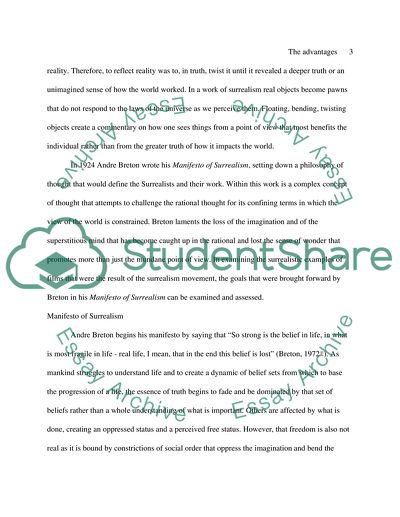Cite this document
(“Advantages and disadvantages of the film medium for Surrealism Essay”, n.d.)
Advantages and disadvantages of the film medium for Surrealism Essay. Retrieved from https://studentshare.org/visual-arts-film-studies/1565411-advantages-and-disadvantages-of-the-film-medium-for-surrealism
Advantages and disadvantages of the film medium for Surrealism Essay. Retrieved from https://studentshare.org/visual-arts-film-studies/1565411-advantages-and-disadvantages-of-the-film-medium-for-surrealism
(Advantages and Disadvantages of the Film Medium for Surrealism Essay)
Advantages and Disadvantages of the Film Medium for Surrealism Essay. https://studentshare.org/visual-arts-film-studies/1565411-advantages-and-disadvantages-of-the-film-medium-for-surrealism.
Advantages and Disadvantages of the Film Medium for Surrealism Essay. https://studentshare.org/visual-arts-film-studies/1565411-advantages-and-disadvantages-of-the-film-medium-for-surrealism.
“Advantages and Disadvantages of the Film Medium for Surrealism Essay”, n.d. https://studentshare.org/visual-arts-film-studies/1565411-advantages-and-disadvantages-of-the-film-medium-for-surrealism.


